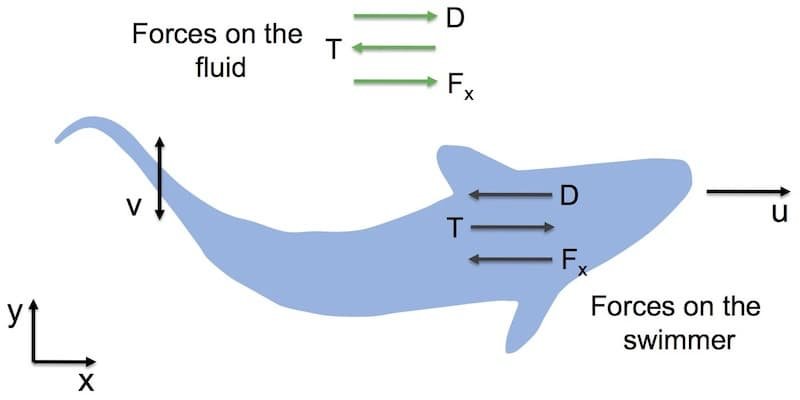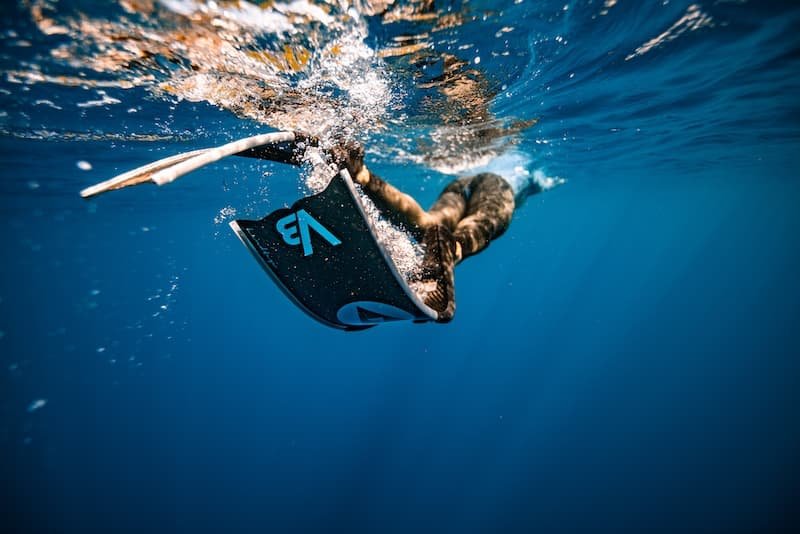
 Nick Pelios
Freediver, Creator
Nick Pelios
Freediver, Creator

 Nick Pelios
Freediver, Creator
Nick Pelios
Freediver, Creator
In 1936, British zoologist Sir James Gray observed something astonishing that led to a scientific mystery known as "Gray’s Paradox." While watching dolphins swim effortlessly at high speeds, Gray was puzzled by how they were able to move so quickly despite the limitations of their muscular power. His calculations showed that dolphins lacked the muscle strength to overcome the drag they faced when swimming at such speeds. According to Gray’s analysis, dolphins shouldn't have been able to swim faster than about 8 miles per hour. Yet, they regularly reached speeds of 20 miles per hour or more. Gray’s paradox was born—a riddle that baffled scientists for decades.
The puzzle of how dolphins could swim so fast despite seemingly inadequate muscular power became a topic of intense study. At first, Gray proposed that the dolphin’s skin might have some unique drag-reducing properties. He speculated that their skin could somehow decrease the friction with the water, helping dolphins achieve such impressive speeds. However, for many years, no one could definitively prove or disprove this theory. It wasn’t until the early 21st century, over 60 years later, that modern research tools and methods helped solve the mystery once and for all.
The reason Gray’s paradox persisted for so long was due to the complexity of fluid dynamics—how objects move through water or air—and the difficulty in measuring the forces dolphins generated underwater. Dolphins are not only graceful swimmers but also incredibly powerful, and their speed is rooted in two main factors: the shape of their tails (or flukes) and the way they move through water.
Dolphins swim by moving their tails in an up-and-down motion, known as “tail flapping.” This motion generates a tremendous amount of thrust. However, as Gray observed, muscle power alone didn’t seem sufficient to account for the speeds dolphins achieved. The paradox stemmed from the fact that dolphins generated far more power than their muscles should have been able to produce.
As it turns out, the dolphin’s tail shape, not just its movement, is key to understanding how they achieve such efficient propulsion. The tail acts like an airfoil, similar to an airplane wing, creating lift as it moves through the water. Dolphins use their tails to channel water in such a way that it generates immense thrust, far greater than what muscles alone could accomplish.

Fast forward to 2008, when a breakthrough study by professor Timothy Wei from the Rensselaer Polytechnic Institute provided the first quantitative evidence to solve Gray’s paradox. Wei and his research team used cutting-edge tools from aerospace engineering to measure the forces dolphins generate while swimming.
One of the critical methods Wei’s team employed was Digital Particle Image Velocimetry (DPIV), a video-based measurement technique that allows researchers to track fluid flow at very high resolutions. They filmed two bottlenose dolphins, Primo and Pula, swimming in a tank filled with tiny air bubbles. By tracking the movement of the bubbles, the researchers could see how water flowed around and behind the dolphins' tails. This method provided unprecedented insight into how much force the dolphins' tails generated.
The results were astonishing. The researchers found that dolphins could produce up to 200 pounds of thrust with each tail flap. This was far more than the earlier calculations had predicted. In comparison, even Olympic swimmers at their peak only generate around 60-70 pounds of thrust.
The key revelation was that dolphins’ tail shapes, not just their muscle power, were the primary drivers of their speed. Dolphins use the unique geometry of their tails to create large amounts of thrust with relatively little muscle force. This shape allows them to move through water much more efficiently, converting their muscle energy into forward motion with exceptional precision.

Dolphins swim using a technique called “thunniform propulsion,” where the majority of the power comes from the tail, while the rest of the body remains relatively streamlined. Unlike humans or fish, dolphins don’t generate much power from their limbs or body undulations; they rely almost exclusively on their tails. The tail’s flexibility and stiffness at just the right points allow dolphins to push large volumes of water backward with each stroke, achieving remarkable speeds with minimal drag.
Moreover, dolphins are also able to minimize the energy lost to drag. They have an optimized body shape that reduces friction with the water. This streamlined form, along with their powerful tails, enables them to glide through the water with maximum efficiency.
Solving Gray’s paradox revealed a crucial truth about dolphin swimming: it’s not just about muscular strength, but rather the combination of a highly efficient body shape, a uniquely designed tail, and fluid motion that gives dolphins their speed.

Gray’s paradox not only changed how we understand dolphin swimming but also had broader implications for engineering and design. By studying dolphins, scientists and engineers have gained valuable insights into fluid dynamics that have informed everything from ship hull designs to swimwear and even fins for freediving.
The principles discovered through dolphin research—especially the role of tail shape in generating efficient propulsion—have been applied to various aquatic innovations. One standout example of this is in the design of high-performance freediving fins by Alchemy, which borrows directly from the dolphin’s tail structure to maximize efficiency and propulsion.

Alchemy, a leader in high-end carbon fins for freediving, has drawn on these very principles in the design of its innovative blade ending. Inspired by the remarkable efficiency of a dolphin’s tail, Alchemy’s blade design is a testament to the power of biomimicry—taking cues from nature to create superior engineering solutions.
Alchemy’s blade ending is not just a cosmetic nod to dolphins but a performance-driven innovation. By replicating this natural design, Alchemy’s dolphin tail-shaped blade end significantly boosts propulsion for freedivers. The blade enhances the force generated with each kick, allowing freedivers to glide through the water with greater speed and efficiency. This unique blade shape mimics the way dolphins channel water, enabling divers to maximize their power output with minimal effort.
For freedivers, propulsion is everything. Efficiency underwater means expending less energy, conserving oxygen, and staying down longer. Alchemy’s fins provide just that—enhanced performance with minimal drag. Introduced in 2009, this cutting-edge feature has been a game-changer in the world of freediving fins, providing divers with a distinct edge when it comes to speed and maneuverability.